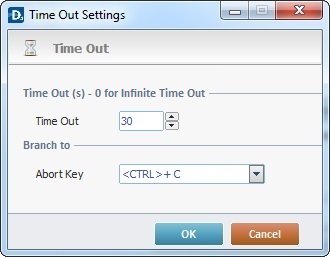Overview
A process is a term used in MCL-Designer V4 which represents the commands that are used to execute a particular function or to manipulate the data within a program - to allow the development of the application business logic.
Processes can be associated to events (actions performed by the device operator) which exist within objects and screens. In other words, they are a consequence of an event (ex: When an operator clicks on a button (event), it triggers an action, such as going to another screen (a "Go To" Branch Process). Processes can, also, be assigned to Local Procedures, Routines and/or a "Routine In".
All processes are executed sequentially.
They are divided into 16 groups, according to their purpose.
It is possible to group the most frequently used processes in the "Favorites" process group ![]() . See Navigating the Process Tab.
. See Navigating the Process Tab.
There are some recurring icons within each Process Group. They will be described in each main process group chapter.
![]()
The ![]() icon appears on the upper right corner of every process properties window. Use it to attach notes to a process.
icon appears on the upper right corner of every process properties window. Use it to attach notes to a process.
Click it and enter your notes in the resulting text box. These notes will be displayed in the "Actions" tab or the "Process" window, in the "Notes" field, and in the "Developer Report".
To define a “Time Out” value, click ![]() , which is located on the upper right corner of any of these processes's properties window. This opens a "Time Out" window.
, which is located on the upper right corner of any of these processes's properties window. This opens a "Time Out" window.

Proceed as follows:
Time out (s) – 0 for infinite time out |
|
Time Out |
Define the time out value in seconds. |
Branch to |
|
Abort Key |
Select a keyboard key from the drop-down list, in case you need to abort the current operation before the defined time out is executed. |
![]()
The time out fulfillment and the use of the "Abort Key" always trigger a "Comm Error".
![]() When establishing a time out, always consider the task it is associated to.
When establishing a time out, always consider the task it is associated to.
Ex: If you define a 2 second time out within a Receive Data from Queue process (used to receive data packets from a specific Host server), the time out may not be enough to allow the application to contact the Host, validate the communication and proceed to data packet exchange. The time out will interrupt the application's workflow and trigger a "virtual" error, meaning, there is no real issue regarding communication between the application and the Host but a "Comm Error" will be displayed.
![]()
You can associate a message box to a time out to inform the operator that this condition occurred for a specific operation and, depending on the application's workflow, you can add the necessary processes/settings to allow the operator to retry that operation.
After filling in the required options, click ![]() to conclude or
to conclude or ![]() to abort the operation.
to abort the operation.
Topics
This chapter covers the following topics:
Topic |
|---|